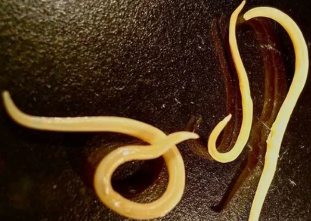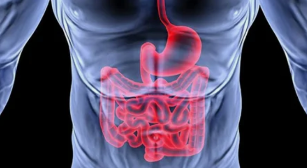Before starting to treat parasites, it is important to identify which type is present in the body. It is necessary to find effective methods of treatment, as well as most of the medicines which specially designed to get rid of certain worms.

As worms protozoa
Sometimes, you may have heard the phrase that a patient has been infected with a protozoa worms. You need to understand that it is solely the simplest one-a single-celled micro-organisms, or, at least, the organization of the workshop. However, you should not multicellular as worms, and in worms.
The simplest of all the processes that occur inside the cell cytoplasm into the cell nucleus, but when you have the anatomical organization is a lot more difficult, but a variety of organs that perform a specific physiological function. In order to qualify you have to the best the basis is wrong.
Sometimes referred to as helminths protozoan parasites in comparison to insects: bedbugs pinball, face, etc., as the latter are considered as much higher in the evolutionary lineage. In this context, the name of the worms, protozoa are allowed.
- The symptoms, prevention, treatment of human sarcocystosis.
- Thus, the black mouth of the people.
- So, how do the eggs of the worms.
Most make the common types of parasites
The most common endoparasites of both, of course, the helminths (worms), which, according to various estimates, infected more than 80% of the world's population.
A large number of these parasites, and thus of the basic type split:
- nematodes – round worms (roundworm, pinworm, and types of Trichinella, whipworm, etc.);
- cestodes – tapeworms (lantecy, of pork in the beef tapeworm, tapeworm, etc.);
- trematodes – worms-flukes (liver, blood, lungs, the flukes that live in the gut).
Sometimes, you can also find a more General way, the classification, according to which all types of parasites, people can be divided into:
- luminal (intestinal), parasitic in the intestine;
- tissue, localized in other organs, in the tissues of the.
Consider a brief description of the most common types of worms.
Roundworms (nematodes)
- Roundworm – roundworms are so common in length from 20 to 40 cm, parasites in the small intestine, but the first humans migrate into the the body, which affects the blood system, the respiratory. Along with these intestinal parasites can be detected in the liver within the gall bladder, the heart to the lungs. A common symptom of ascariasis in an allergic reaction.
- Pinworms – small worms, up to 1 cm, which affects the gut into the result in, not enterobiasis disorders of the digestive system, exhaustion, sleep disorders, etc., a Characteristic symptom is the itching of the pinworms the anus, where they lay their eggs.
- Species of Trichinella – these are microscopic worms (the size of only a few millimeters in length) leads to a do a serious of the disease trichinosis, which can be, if it is not a disease untreated, may lead not to the death. The adults of the species that live in the human muscle (respiratory, face, etc.), causing pain in the muscles, fever, swelling of the allergic rash on the skin.
- Vlasoglavy – you have a small (length 4.5 cm, with the anterior part of the body,
in the form of a nit), the larvae of which cause a trihozefalez, with the diarrhoea, an acute pain in the abdomen other symptoms that resemble appendicitis. As a result of the poisoning of anemia.
Tapeworms (cestodes)
- A tapeworm, the length of the body ranges up to 10 m, which leads to the development of the difillobotrioz, with nausea, weakness, vomiting, unstable stol, asthenia in anemia.
- Pork tapeworm in length from 3 to 8 m, and the parasite, primarily in the small intestine causes two diseases: taeniasis by the dyspeptic, asthenic-neurotic in the abdominal syndromes in cysticercosis, with the poisoning of the intestinal allergic in breathing. Depending on the localization of cysticerci affects the muscles, brain, heart, eyes, etc.
- Beef tapeworm, which can be the length of a reach of 18 m, and in the causes of the beef tapeworm infection is considered to be one of the most dangerous types of worms. If you do not do deworming, they will stay within the body, may do 18 or 20 years old. It is thick in localized and small, may cause serious poisoning, with its resultant product, as well as diarrhoea, nausea, vomiting, abdominal pain, anemia, allergic reactions in problems with the nervous system.
- The dwarf tapeworm the length of only 1.5-5 cm of the source of the gimenolepidoz with a diarrhea, a pain in the astheno-neurotic syndromes that primarily affect the gastrointestinal the nervous system to the liver.
- Echinococcus is considered to be the smallest tape worm – what is the length of the 2.5 to do an 8, rarely a 9 mm, but it is an infection of the serious consequences, such as the liver, in the lungs, where they form cysts within the tumors, which is caused by damage to these organs.
Worms-flukes (trematodes)
- The liver Fluke Fluke liver is shaped like a sheet with a length of 30-50 mm, in mm, of a width of 8-13, it has a suction Cup. The compensation of the sheath of the liver in a clog the bile ducts, which can completely block the flow of bile. Can lead to cirrhosis, jaundice in liver cancer.
- The cat (a Siberian) - a cat, or a fool, Fluke, a flat worm with a length of 4-13 mm. Localization – the ducts of the gall bladder, the liver, in the pancreas. The causes of opisthorchiasis, with the development of gastritis, ulcers, pancreatitis, cholecystitis, as long as the cancer of the liver, which can lead do death.
- The lung Fluke of an ovoid is the shape of a red-brown body with a male bodice, a length of from 12 to 7.5 mm, and a width of from 4 to 8 mm. Affects the lungs, causing inflammation, pleural effusion, focal fibrosis in the lung cancer. When the penetration into the brain, causing encephalitis in the meningoencephalitis.
- Shistosoma (blood flukes) – dioecious worms the size of 1-2 cm) of the egg, which causes an increase in the liver, the spleen, in the lymph nodes, the formation of polyps in the colon, diarrhea, granulomatous inflammation, leading to do for cancer of the bladder.
The disease, which are caused by the
The most dangerous parasites that live in the human body and can cause a variety of diseases. Very often, the disease is caused by a specific parasite, which has the same name as him. Thus, the parasites are of different types, which in humans may be caused by the following diseases:
- some of the parasites in humans (flukes) trematode causes;
- in cestodosis of pride when you are losing tapeworms;
- if an adult or a child, in the gut, so the round worms, nematodes that information;
- leeches lead to hirudins;
- Arctocephalus challenge skrebni.
However, the parasites are in the human body is no longer a " hit " to one's body. Depending on the localization of parasites in the human body, determine the following parasitic diseases:
- With the defeat of the eye may be onchocerciasis, demodicosis, cysticercosis, myiasis of the
- The digestive tract of the Disease, which is caused by single-celled parasites are the helminths – ascariasis, trichinosis, hookworm, enterobiasis, intestinal myiasis in metagonimus;
- The brain diseases – echinococcosis, toxoplasmosis, cysticercosis, in alveococcosis;
- Dermatological diseases (demodicosis, pediculosis, scabies, pulicosis, trombitas, ftiras;
- Pulmonary pathology – hydatid disease, ascariasis, acariasis, alveococcosis, tomingas, etc;
- Liver disease opisthorchiasis, alveococcosis, echinococcosis, clonorchiasis a.
- In the mouth, the mouth, in the ear, parasites can cause a variety of types of myiasis;
- The pathology of the heart – dirofilaria in hydatid disease,
- Diseases of the musculoskeletal system, the connective – alveococcosis, urate miaz, echinococcosis;
- The pathology of vessels – filaretos in schistosomiasis.
Just have to
Flat worms, or flukes (trematodes), such a characteristic of the leaf, the shape of the body. Their structure is very well organized, they have a digestive, excretory in the nervous system. The life-cycle of their respective owners.
They often use these types:
- Siberian Fluke (cat Fluke), opisthorchis ali. The most common infection is with the raw fish, which the water had done quite a dangerous disease in opisthorchiasis. The reproduction of the parasites, which very quickly occurs, which can lead to serious consequences. You have so yellow, it may, in its length, limited to 12 meters. Embedded in the human body, the parasites that cause internal bleeding, break of the discharge of the bile, it causes the breakdown of the pancreas. Dangerous effects: cholangitis suppurative tip, ahilii, cholangiocarcinoma.
- The Liver Fluke. The intermediate host, and thus, the representatives of the cattle, and in man becomes infected by eating poorly processed animal meat is concerned. As a result of the infection develop the disease fascioliasis. The size of these worms is relatively small (not more than 5-6 cm), but can be the cause of a dangerous disease: abscess of the liver, cholangitis, hepatitis. Through the larva's blood, which can spread the parasite to be all over the body.
- Shistosoma. So resident may be in the blood vessels, a long lasting component of your blood. As a result of his / her life, is able to develop varicose found the tumor. The main symptom — an intense General poisoning.

The human body is able to detect a large number of different worms-parasites have the potential to gain a foothold in a variety of internal organs. Caused by the chronic disease, which can lead to severe pathology. At the onset of the symptoms of helminth infections you have any kind of consult with your doctor if you want to start the right treatment.
Beef tapeworm
Beef tapeworm can reach a length of 12 meters. It is a hermaphrodite, which may be more than 100,000 to produce eggs, which are excreted the feces. The eggs get into the soil, then into plants, those plants that eats the cattle. In the animal body, the eggs become larvae, which, as in the localized muscle. When a person eats infected beef, the larvae enter the intestine. Since the person is not a person, the larvae are transmitted.
The adult worms have a head with four suckers, a neck, in the body, which is made up of segments. Segments the Number of which is constantly increasing, the Mature segments are separated from the man iz a worm to crawl to gut it out.
Beef tapeworm
The symptoms as nausea, vomiting, dyspepsia, increased salivation, dizziness, weakness, nervousness, fatigue, abdominal pain of uncertain data, allergies, fluctuations in appetite.
With the aim to make the beef tapeworm of the body, the scheme, which is composed of 3 phases: the preparation (cleansing of the body), and treatment with an antiparasitic drug, and recovery (nutrition, herbal medicine).
Tape worms
You have to strip-type, or cestodes, as a variety of flat worms, the length of which may be in the range of mm is from 2 to m, and not 10 to 12. The body of these parasites, which have a particular structure — a number of segments, the head, in the neck of the suction cups (with hooks) for attaching it to the wall. V is a hermaphrodite cestode in the way of the eggs in the bucket. Nutrients, so while the entire surface of the body.
There are the following types of common tapeworms:

- Alveolar. You can lead to cholangitis, in the abscess, but also to itself to spread out the spleen, the muscles in the human brain.
- Cepni, or tapeworms. Beef excite tapeworm tapeworm infection of bovine diseases and is usually in the small intestine. Serious complications — cholecystitis, intestinal obstruction, appendicitis. So, This may be a result does not accept the consequences: atrophy of the intestinal sheath, Gunter glossitis, leukopenia.
Protozoan parasites
Toxoplasma gondii (Toxoplazma gondii) is a species of the parasite, the primary host of the by the cats. This way, you can be transported to a warm-blooded animal in a man. The disease is caused by a called Toxoplasma toxoplasmosis. The course of the disease is straightforward, with the exception of the injury of the fetus inside the mother's body during pregnancy, which poses serious consequences for both the mother to the fetus, and even death.
Amoeba unicellular organism is, quite simply, the ban is considered to be one of the first creatures that lived on the Earth. The disease caused by the amoeba, is called amebiasis. Enteric infections with a predominantly ulcerative lesions of the large bowel with the onset of bloody diarrhea, a possible occurrence of a secondary intestinal lesions have a tendency to a chronic course.
Malaria parasites – the simplest single-celled creatures in the cycle, that is, the person who is the owner of the temporary, in-komar – lasting. In the human body, the parasite Plasmodium is introduced in 4 types:
- P. malarie – four-malaria;
- P. vivax — falciparum malaria;
- The P. ovale — ovale of the three-day malaria;
- The P. falciparum — tropical malaria;
The Interval between bursts is dependent on the type of pathogen. Anemia, in Addition to all of this, because the parasite affects the blood cells erythrocytes.
Giardia — protozoan pear-shaped, having two cores of the four pairs of flagella. The main source of the swine in human beings. Giardiasis a common disease with primary damage of the liver into the small intestine. The disease appears in a mild violent, or form.
Trichomonas – flagellated, single-celled organisms that form a pear, the root causes of the disease trichomoniasis, sexually transmitted the impact of the treatment of the diseases of the urinary tract, in the genital system. Yes, it is possible to detect, when it is man on woman, but for men the disease is usually asymptomatic.
Trypanosoma is a genus of unicellular flagellate protists. To cause serious diseases of trypanosomiasis, a deadly threat to both the people and the disease. As bedbugs is huge Carrier of trypanosomes, tsetse flies. In the country of the body, the parasite multiplies under the skin and then pass through the lymphatic system into the blood. Most of the pathogens that are found in the spinal cord to the brain where it destroys their cells, secrete toxins.



























